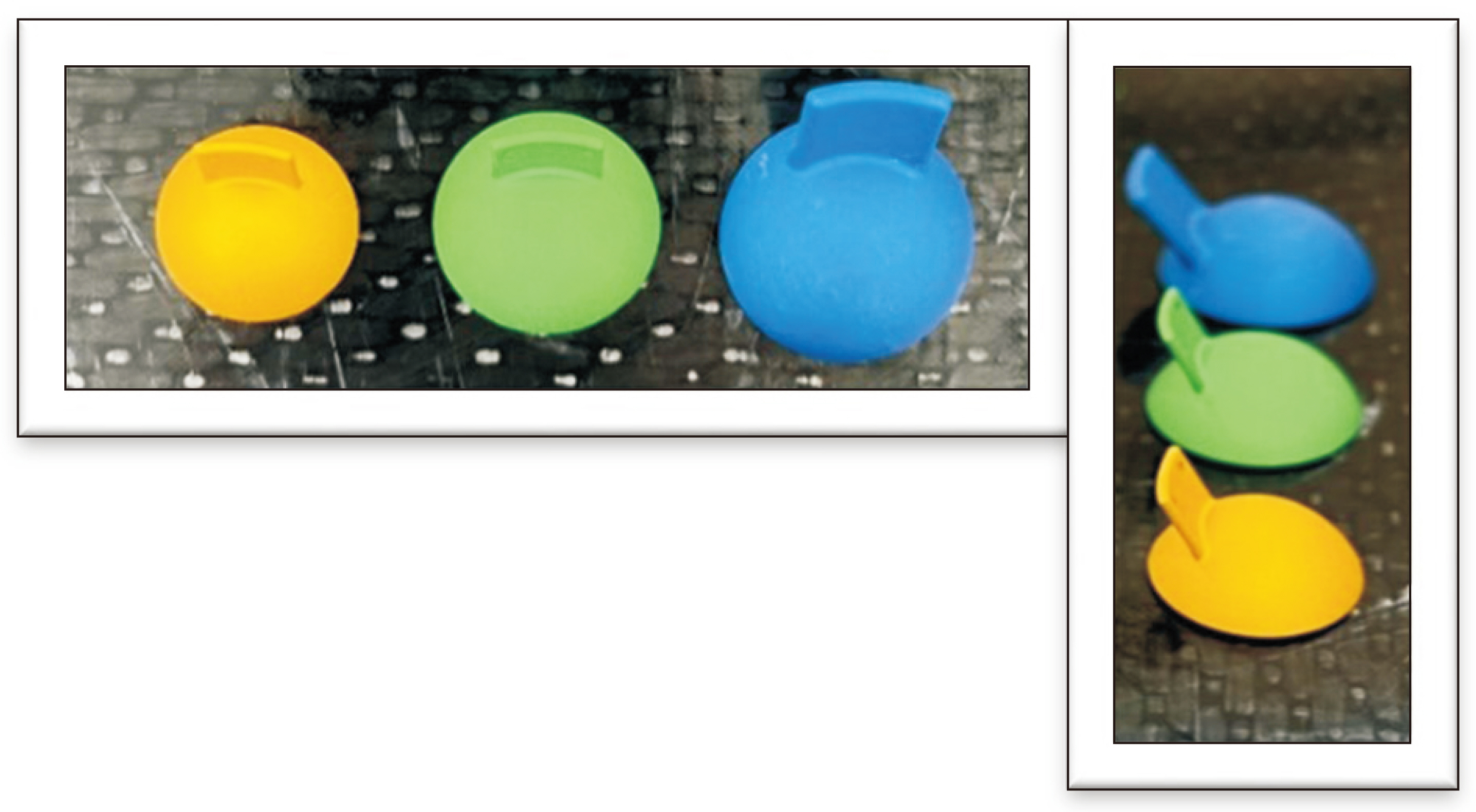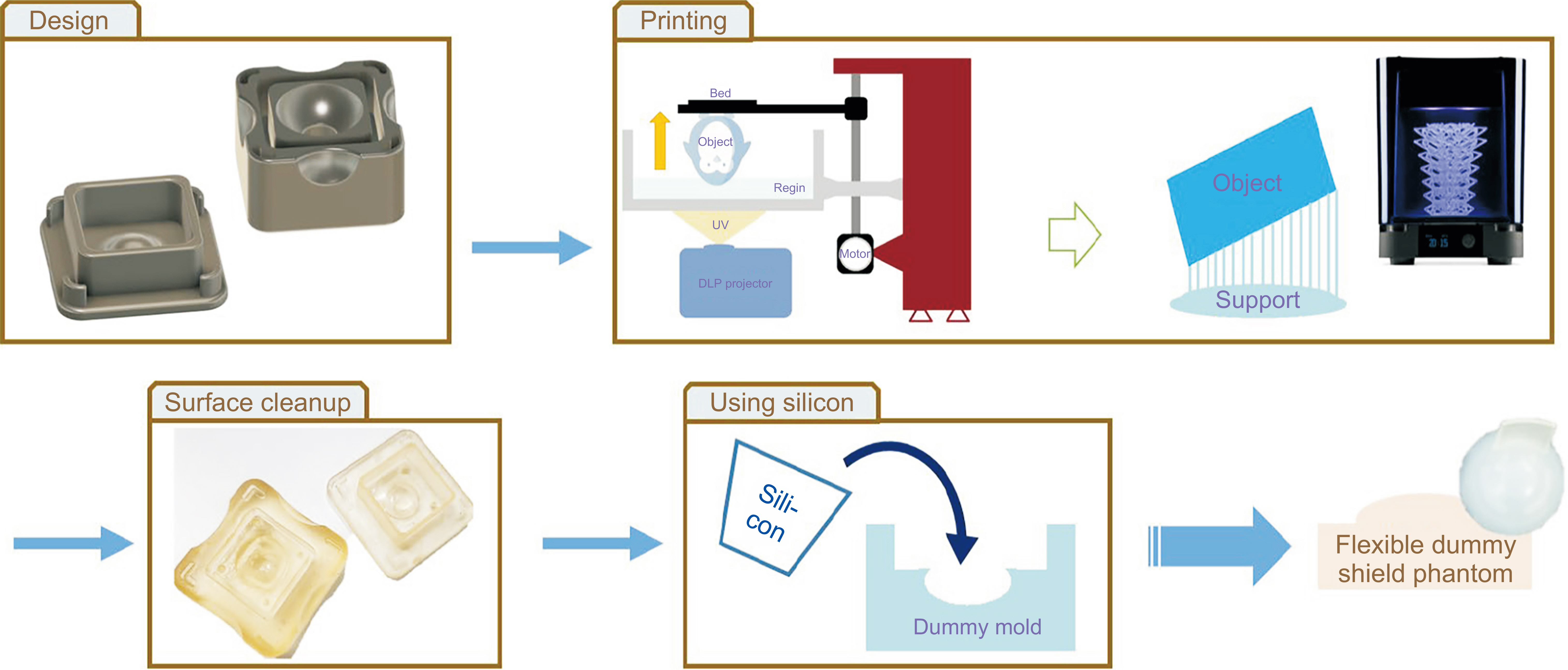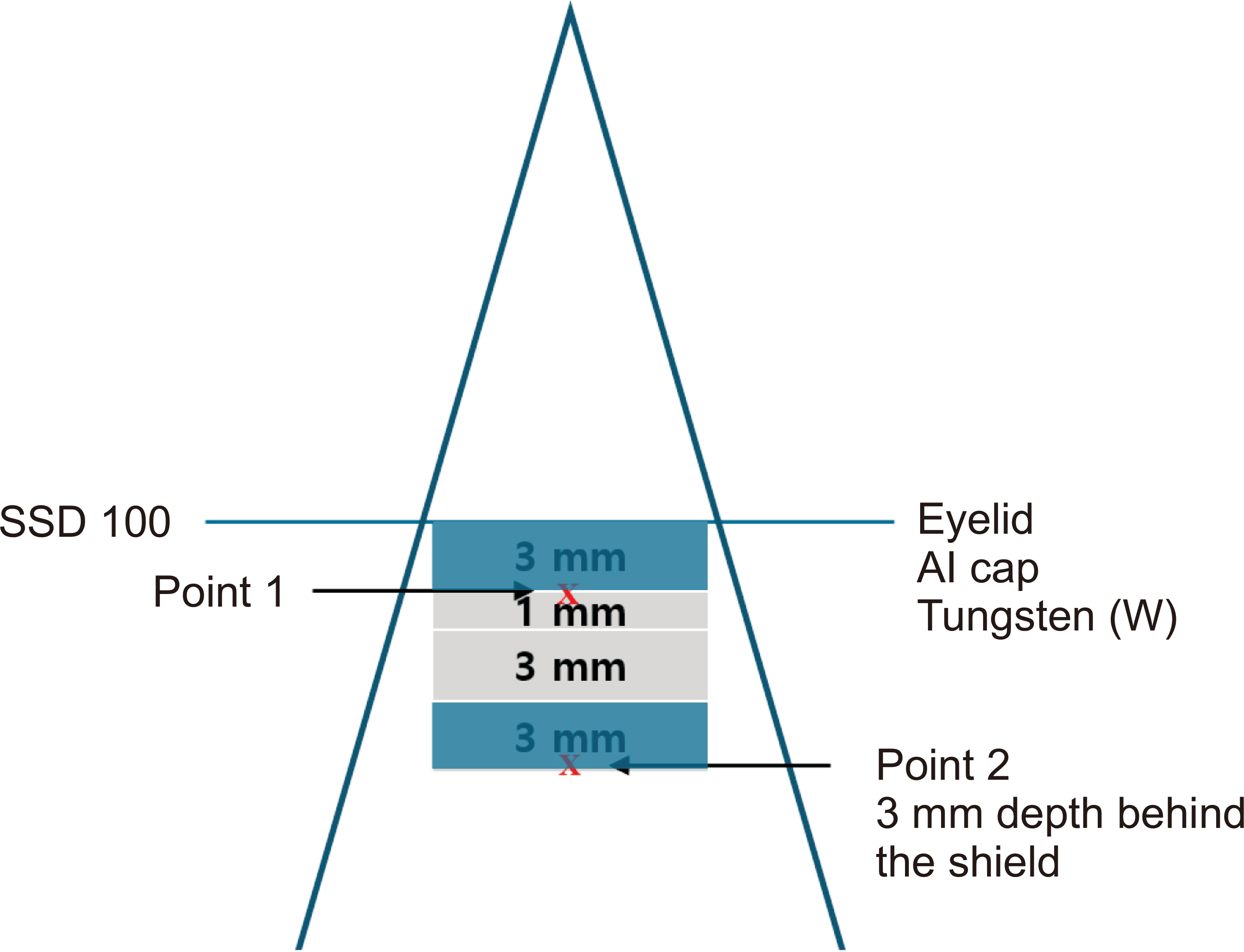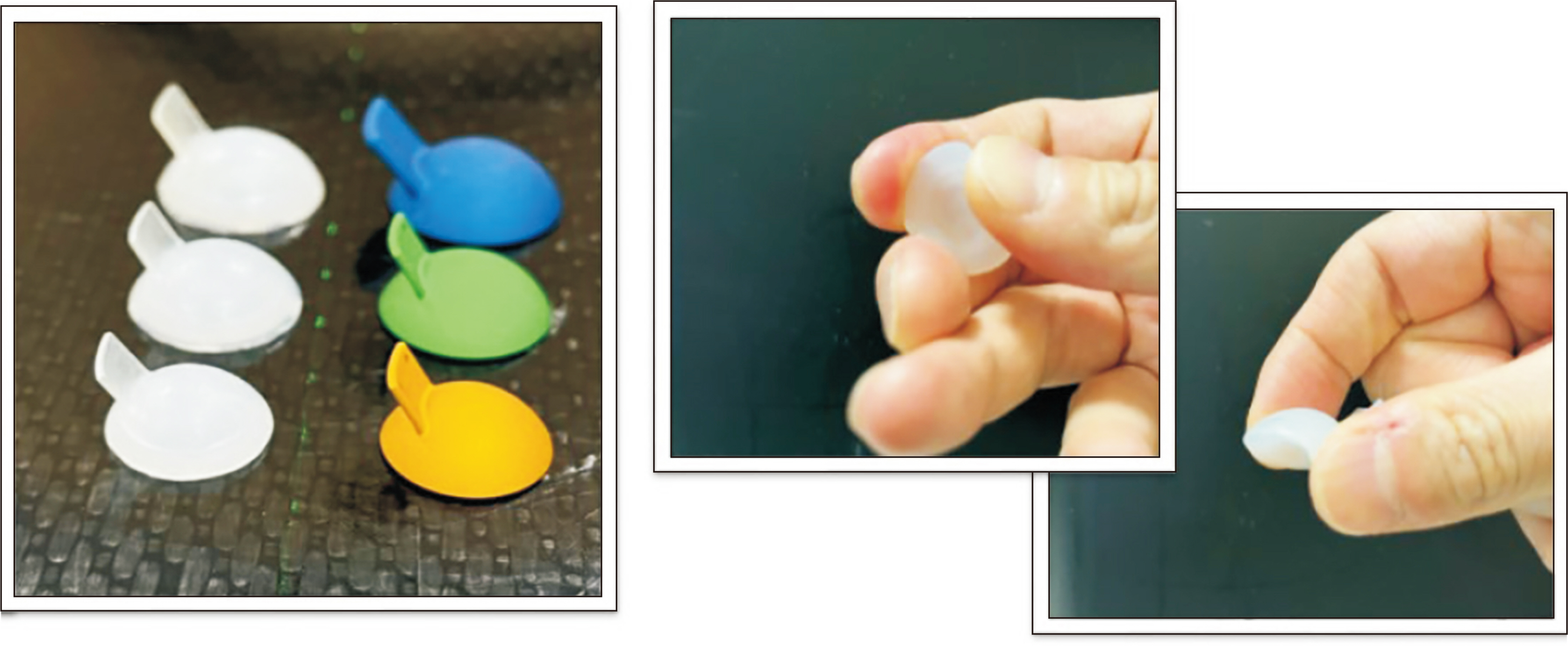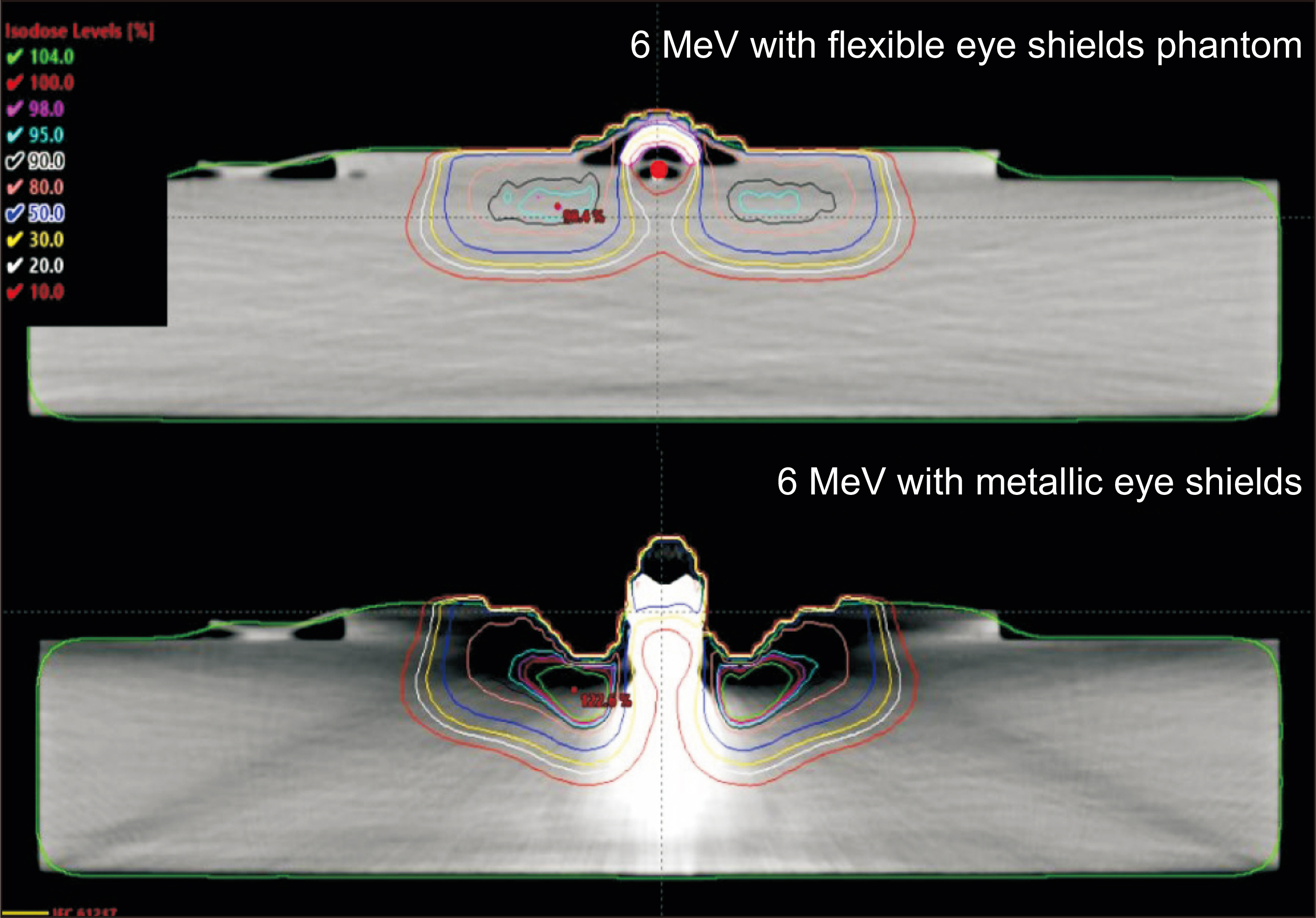Prog Med Phys.
2024 Sep;35(3):59-66. 10.14316/pmp.2024.35.3.59.
Development of a Flexible Eye Shield Phantom for Artifact-Free Computed Tomography Images
- Affiliations
-
- 1Department of Radiation Oncology, Seoul National University Hospital, Seoul, Korea
- 2Institute of Radiation Medicine, Seoul National University Medical Research Center, Seoul, Korea
- 3Biomedical Research Institute, Seoul National University Hospital, Seoul, Korea
- 4Department of Radiation Oncology, Seoul Medical Center, Seoul, Korea
- 5Department of Radiation Oncology, Kangbuk Samsung Hospital, Sungkyunkwan University School of Medicine, Seoul, Korea
- KMID: 2559976
- DOI: http://doi.org/10.14316/pmp.2024.35.3.59
Abstract
- Purpose
This study aimed to develop a flexible eye shield phantom to acquire artifact-free computed tomography (CT) images for electron beam radiotherapy.
Methods
A flexible eye shield phantom for a newly designed eye shield was fabricated. Because of metal artifacts caused by an eye shield composed of high-density materials such as tungsten or lead, CT image acquisition is not appropriate for treatment planning because of inaccurate dose calculation and organ-at-risk delineation. To acquire artifact-free CT images, a mold of the same size as the outer dimension of the metallic eye shield was manufactured using 3D printing. The flexible eye shield phantom was imaged using a Philips Brilliance CT Big Bore under the same condition as the measurement. The phantom image with an average of 200 Hounsfield unit (HU) was imported into the treatment planning systems (TPS) and assigned a value of 26,750 HU to consider the material density of tungsten. The dosimetric comparison using a 6-MeV electron beam was performed. Measurement was performed using a metal oxide semiconductor field effect transistor detector for point doses at 3 and 10 mm.
Results
The artifact-free CT images using a flexible eye shield phantom without air bubbles were transferred into the TPS. The dose at 10 mm calculated using the TPS agreed with the ionchamber measurements within 2 cGy. Conversely, a larger dose discrepancy between the measured and calculated doses was found at 3 mm depth.
Conclusions
The flexible eye shield phantom was successfully fabricated to apply electron treatment planning by acquiring artifact-free CT images. The dose calculated using the artifact-free image was comparable to the measured dose at lens depth when applying an eye shield.
Figure
Reference
-
References
1. Finger PT. 2009; Radiation therapy for orbital tumors: concepts, current use, and ophthalmic radiation side effects. Surv Ophthalmol. 54:545–568. DOI: 10.1016/j.survophthal.2009.06.004. PMID: 19682622.
Article2. Le QT, Eulau SM, George TI, Hildebrand R, Warnke RA, Donaldson SS, et al. 2002; Primary radiotherapy for localized orbital MALT lymphoma. Int J Radiat Oncol Biol Phys. 52:657–663. DOI: 10.1016/S0360-3016(01)02729-8. PMID: 11849787.
Article3. Zhou P, Ng AK, Silver B, Li S, Hua L, Mauch PM. 2005; Radiation therapy for orbital lymphoma. Int J Radiat Oncol Biol Phys. 63:866–871. DOI: 10.1016/j.ijrobp.2005.03.005. PMID: 15925453.
Article4. Ohga S, Nakamura K, Shioyama Y, Sasaki T, Yoshitake T, Atsumi K, et al. 2013; Radiotherapy for early-stage primary ocular adnexal mucosa-associated lymphoid tissue lymphoma. Anticancer Res. 33:5575–5578. PMID: 24324100.5. Shiu AS, Tung SS, Gastorf RJ, Hogstrom KR, Morrison WH, Peters LJ. 1996; Dosimetric evaluation of lead and tungsten eye shields in electron beam treatment. Int J Radiat Oncol Biol Phys. 35:599–604. DOI: 10.1016/S0360-3016(96)80024-1. PMID: 8655385.
Article6. Park JI, Lee S, Kim IH, Ye SJ. 2020; Artifact-free CT images for electron beam therapy using a patient-specific non metallic shield. Phys Med. 75:92–99. DOI: 10.1016/j.ejmp.2020.06.001. PMID: 32559651.
Article7. Kang SK, Yoon JW, Hwang T, Park S, Cheong KH, Han TJ, et al. 2015; Electron dose distributions caused by the contact-type metallic eye shield: studies using Monte Carlo and pencil beam algorithms. Med Dosim. 40:240–243. DOI: 10.1016/j.meddos.2015.01.006. PMID: 25724475.
Article8. Kang SK, Park S, Hwang T, Cheong KH, Han T, Kim H, et al. 2013; Application of a dummy eye shield for electron treatment planning. J Radiat Res. 54:174–181. DOI: 10.1093/jrr/rrs067. PMID: 22915776. PMCID: PMC3534269.
Article9. Oh SA, Park JW. 2019; Fabrication and dosimetric evaluations of a dummy eye shield for radiotherapy. J Korean Phys Soc. 75:605–609. DOI: 10.3938/jkps.75.605.
Article10. Park JM, Son J, An HJ, Kim JH, Wu HG, Kim JI. 2019; Bio-compatible patient-specific elastic bolus for clinical implementation. Phys Med Biol. 64:105006. DOI: 10.1088/1361-6560/ab1c93. PMID: 31022714.
Article11. Catt B, Yudelev M. A dosimetric evaluation of interface effects using two commercial electron treatment planning algorithms. Paper presented at: World Congress on Medical Physics and Biomedical Engineering; 2015 Jun 7-12; Toronto, Canada. 456–459. DOI: 10.1007/978-3-319-19387-8_111.
Article
- Full Text Links
- Actions
-
Cited
- CITED
-
- Close
- Share
- Similar articles
-
- Evaluation of the Radiochromic Film Dosimetry for a Small Curved Interface
- Metal artifact production and reduction in CBCT with different numbers of basis images
- Reduction of Metal Artifact around Titanium Alloy-based Pedicle Screws on CT Scan Images: An Approach using a Digital Image Enhancement Technique
- In-Plane Shielding for CT: Effect of Off-Centering, Automatic Exposure Control and Shield-to-Surface Distance
- Influence of Anatomical, Scanning, and Reconstructing Parameters on Image Quality of CT Angiography: Vascular Phantom Study

